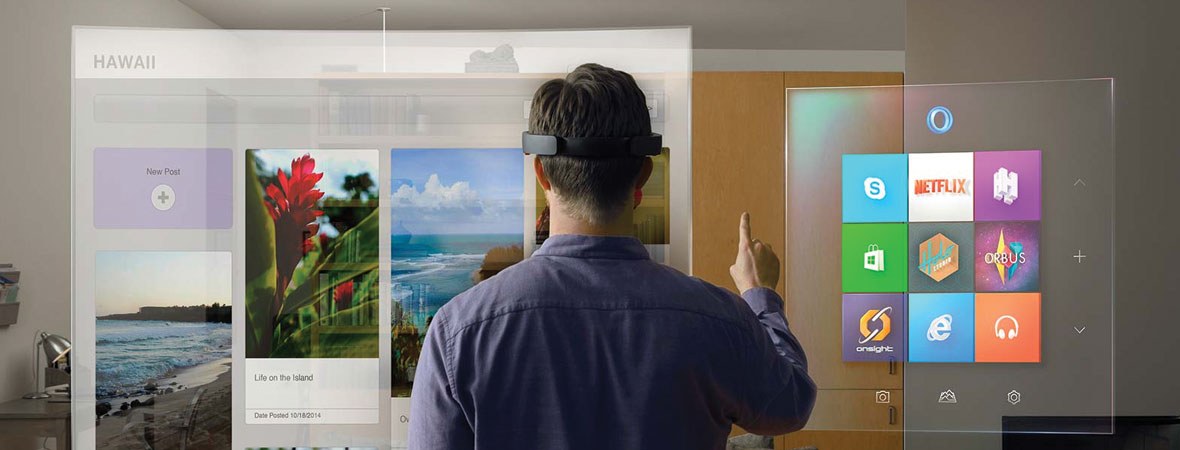
3D holographs reach smartphones
That’s how holograms work if you didn’t know: lasers. Holograms use laser lights to illuminate the subject, which is then imprinted on a recording medium. The reason lasers are needed is because they have a fixed wavelength, like a defined vector; light from other sources aren’t so effectively regulated and so can’t focus tight enough to define a 3D image.
One of the more interesting ways in which holographic technology has been used is in the form of art. Artists have been, along with scientists, some of the first to capitalise on this wave of rather incredible technological progress.
The master of surrealism Salvador Dali was hailed as one of the first artists to use holographic technology as an art form in his collaboration with Alice Cooper back in the 70s. The truth, however, is that there was an exhibition of holographic art at the Cranbrook Academy of Art in Michigan, 1968, preceding Dali’s famous work by a few years.
The Growth of Holographic Technology
Hitherto, holograms have remained almost the exclusive possession of scientists and famous artists. As far as the public sphere is concerned, holograms continue to exist as far away abstractions, a Star Wars work of science fiction – not an accessible piece of technology. Like the hologram itself, holograms still appear lucent to most people – unreal and out of reach. Although there’s still a long way to go, such is not completely the case.
Some evidence of this lies in Bleen. Bleen is a company that has developed a device (that looks like a futuristic bird’s egg) that uses 3D reconstruction to create a moving holographic image. Their technology is capable of conjuring content from their public open source library, producing holographic images that extend up to 8’ 3” from that aforementioned egg device.
CEO of Bleen Bogdan Shevchuk understands the nature of the mission that he’s embarked upon with Bleen, stating: ‘We recognize that we’ve taken on a great challenge, trying to develop one of the most desired technologies. Our ultimate goal is to bring a real consumer product to the market that enables everyone to watch 3D content in spatial quality.’
Another company (which you very may well have heard of) that is toying around with holographic technology is Microsoft. While Google Glass has been recalled, Microsoft’s HoloLens is a bit of technology that very well may revolutionise the mobile landscape. I won’t elaborate on the HoloLens here as if you’re interested you should just check it out for yourself, what I would like to do is look at some of the major players in the holographic mobile sector so far.
The Mobile Future
A key to this future of mobile holographic display may lay with startup company Ostendo Technologies Inc. who has spent the past nine years working on miniature projectors designed to emit crisp videos and glasses-free 3-D images for smartphones and giant screens. Although the technology is still considered to be in its infancy, it's already demonstrating the potential capabilities of holographic technology coupled with smartphone devices, and the concept of a 3D mobile evolution being not as distant as first imagined.
A name to watch out for - aptly named after the Star Wars princess - Leia is capable of turning a normal LCD smartphone screen into a 3D holographic display, without the need of "special glasses".
The technology behind Leia is interesting to say the least. It does not project the holographic image outwards, rather it shows an accurate 3D image on the screen being viewed.
Possibly the most important part of the technology behind Leia is its backlighting panel which manipulates light to render a 3D image on a screen. It's understood Leia's display takes 64 images of what is being represented and mashes them together to create a 3D image that we interpret to be almost floating away from the device.
Director of nanofabrication at Leia, Sonny Vo told CNBC that the hardware is small enough to fit in smart devices (watches, phones and tablets) and said Leia was in talks with device makers on integrating the product in the not so distant future.
Another significant player to consider is Takee Technology, a Chinese mobile manufacturer who developed what many consider to be the world’s first holographic smartphone, released in late 2014. The Takee One handset uses its front camera to catch the user’s eye movement, allowing those using the device to see a 3D effect from different viewpoints.
When an additional shell is attached to the device, four extra cameras can recognise gestures such as those for unlocking the phone or operating the touchscreen, so swipes in the air could be used to navigate through home screens. We’ve seen something like this on the Galaxy Note 3, and also heard about a similar feature on a future Windows phone device, but this is the first phone to integrate the technology.
Before I wrap things up I would like to pose the question...
Is holographic technology really going to be the next giant landmark in the evolution of mobile technology or just another playful feature that never lives up to the hype? After all, first it begins as a type of science fiction useful to only famous artists and the ultra rich, then as a form of entertainment, then as it evolves, it becomes something practical and useful... right?
